Letter of Recommendation Template for Medical School
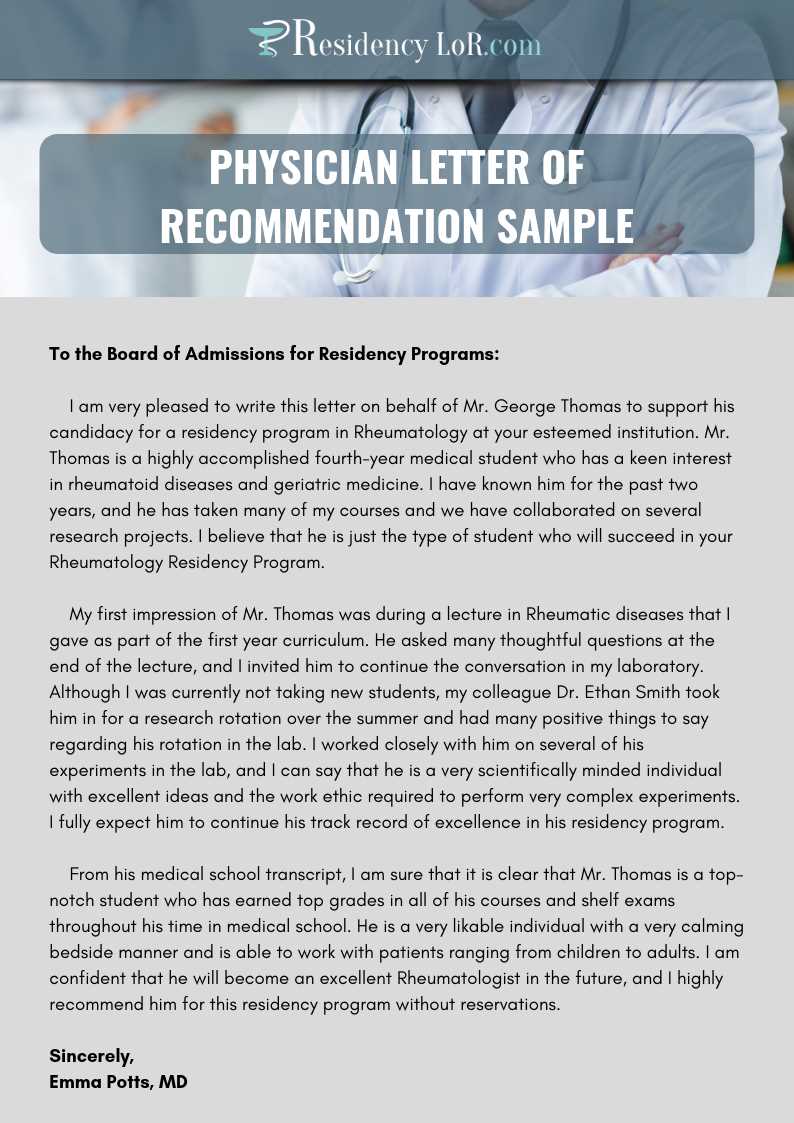
When applying to highly competitive programs, a well-crafted endorsement can make all the difference. Such a statement serves as a powerful tool, providing insight into the applicant’s abilities, character, and potential. A carefully written testimonial highlights strengths that may not be fully captured by academic transcripts or test scores alone.
Successful letters often emphasize personal qualities, work ethic, and specific achievements that showcase the individual’s readiness for the challenges ahead. These endorsements not only validate the applicant’s qualifications but also provide a sense of the unique traits that set them apart from others.
In this section, you will discover how to construct a robust recommendation that leaves a lasting impact. Whether you are crafting one yourself or seeking guidance for someone else, following a proven structure ensures clarity and persuasiveness in presenting the candidate’s strengths.
Why a Strong Letter is Crucial
When applying to competitive academic programs, the strength of an endorsement can significantly influence the decision-making process. A compelling and well-written document helps the applicant stand out, providing insight into their personal qualities and professional capabilities beyond the standard application materials.
These testimonials hold considerable weight as they provide a third-party perspective on the candidate’s potential. Admissions committees often rely on them to gauge qualities like dedication, perseverance, and interpersonal skills. In many cases, the written support can make the difference between acceptance and rejection.
- Highlighting unique qualities: A strong endorsement can underscore characteristics that differentiate the candidate from others, such as leadership, empathy, and teamwork.
- Validating accomplishments: It can validate academic or extracurricular successes, providing context that may not be fully captured by other parts of the application.
- Building credibility: When written by a respected individual, it adds credibility and shows that others recognize the candidate’s potential.
In essence, a strong and thoughtful endorsement acts as a crucial tool in enhancing an applicant’s profile and conveying the key attributes that will make them an asset to the program they are applying to.
Key Elements to Include in a Letter
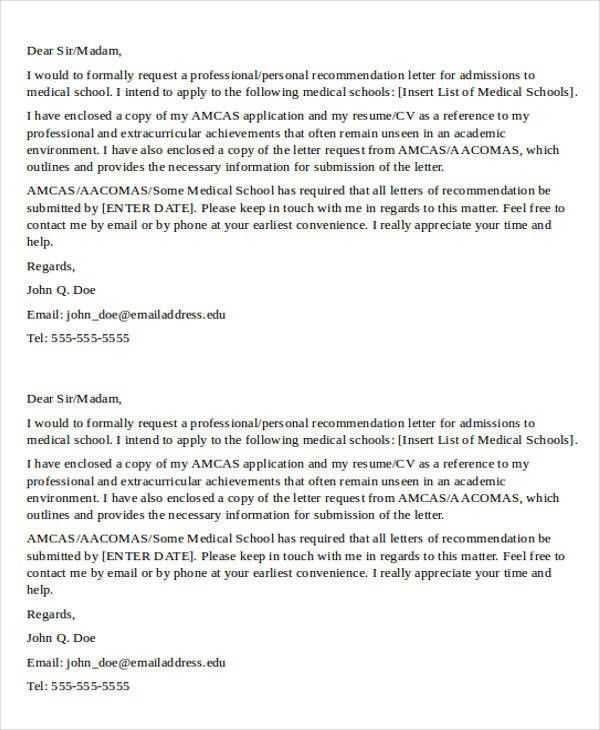
Creating an impactful endorsement requires careful attention to detail. The content must not only be persuasive but also organized in a way that emphasizes the applicant’s strengths and suitability for the program. By focusing on specific elements, the writer can create a document that effectively supports the candidate’s application.
Personal Attributes
It’s essential to highlight the individual’s personal qualities that make them a good fit for the program. These attributes demonstrate the applicant’s character and potential for success.
- Work ethic: Discuss the candidate’s level of dedication, discipline, and commitment to their tasks.
- Interpersonal skills: Mention their ability to work well with others and build positive relationships.
- Leadership qualities: If applicable, highlight their ability to take initiative and lead projects or teams.
Academic and Professional Strengths
In addition to personal traits, it is important to provide examples of the applicant’s achievements and how they excel in their field. This serves to validate their qualifications and suitability for the program.
- Academic performance: Include achievements such as high grades, research experience, or specific academic projects.
- Relevant experience: Detail any internships, volunteering, or other relevant professional activities.
- Problem-solving abilities: Demonstrate how the candidate tackles challenges and applies critical thinking skills.
By integrating these key elements, the document will effectively present a well-rounded view of the candidate, supporting their application in a meaningful way.
Structuring Your Recommendation Effectively
Organizing an endorsement in a clear, logical manner is essential to ensure that the content flows smoothly and captures the reader’s attention. A well-structured document not only highlights the candidate’s strengths but also makes it easier for the admissions committee to evaluate the individual’s suitability for the program. By following a clear format, you can ensure that every key point is presented in a compelling way.
Introduction and Context
Start with an introduction that establishes who you are, your relationship to the candidate, and the context in which you have observed their abilities. This gives the reader a clear understanding of the perspective from which you are writing.
- Introduce yourself: Mention your position, background, and how long you’ve known the candidate.
- Establish your credibility: Briefly explain why your opinion holds weight and how it relates to the applicant’s goals.
- Set the stage: Provide a brief overview of the candidate’s role or achievements in the context of your relationship.
Body: Specific Examples and Details
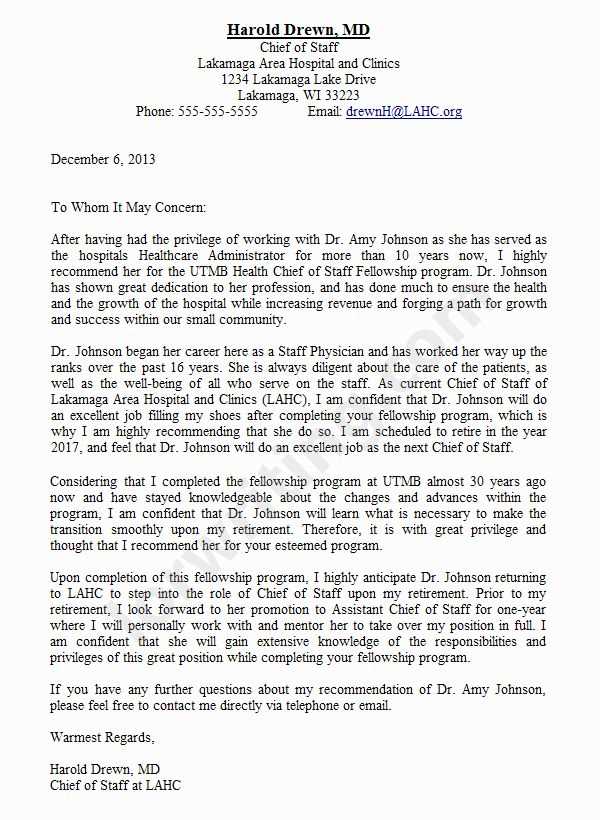
The body should include specific instances that highlight the candidate’s strengths. By providing concrete examples, you illustrate how the applicant excels and demonstrate the skills and attributes that make them a strong fit.
- Detail key accomplishments: Share particular achievements that showcase their skills or work ethic.
- Provide examples: Describe situations where the candidate demonstrated leadership, problem-solving, or other important qualities.
- Explain impact: Focus on how the candidate’s actions contributed to the success of a project or team.
By structuring the document with an introduction, detailed body, and a strong conclusion, the endorsement will effectively convey the candidate’s potential and strengths.
Common Mistakes to Avoid in Letters
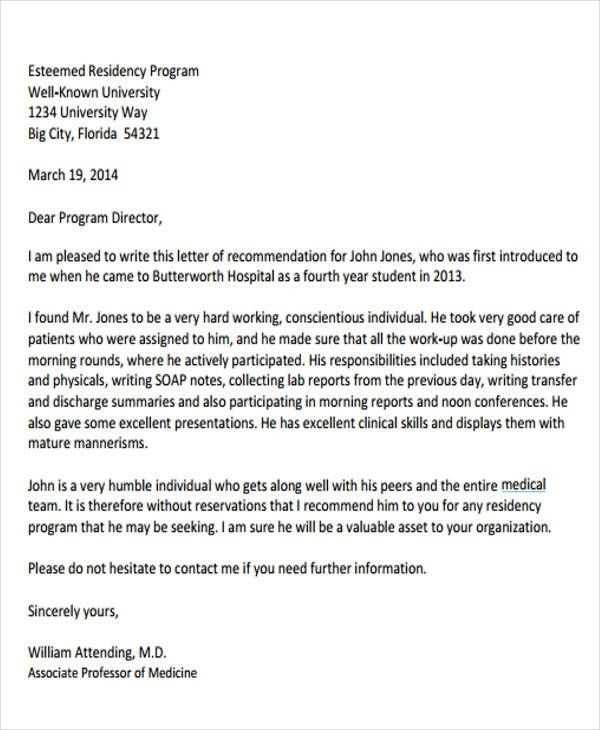
Writing a compelling endorsement requires careful attention to detail, as certain missteps can diminish the impact of your support. Even small mistakes can lead to confusion or undermine the strength of your statement. It’s essential to be aware of common pitfalls to ensure that the content is both persuasive and professional.
- Lack of Specific Examples: Vague statements such as “They are a great student” fail to provide concrete evidence of the candidate’s abilities. Instead, include specific instances where the individual demonstrated their skills or leadership.
- Overuse of Generic Phrases: Avoid using clichés or generic compliments. Statements like “Best student ever” are not meaningful and do not provide valuable insight.
- Failure to Tailor Content: A generic letter may not highlight the unique strengths that the applicant brings to the table. Ensure the endorsement is tailored to the specific qualities and experiences that make the candidate stand out.
- Exaggeration: While it’s important to emphasize strengths, overstatement can come across as insincere. Stick to honest, well-supported claims about the candidate’s abilities.
- Unfocused Writing: The content should remain clear and organized. Avoid rambling or including irrelevant details that distract from the main message.
By steering clear of these common mistakes, you can create a clear, impactful endorsement that effectively showcases the candidate’s strengths and potential.
How to Personalize the Recommendation
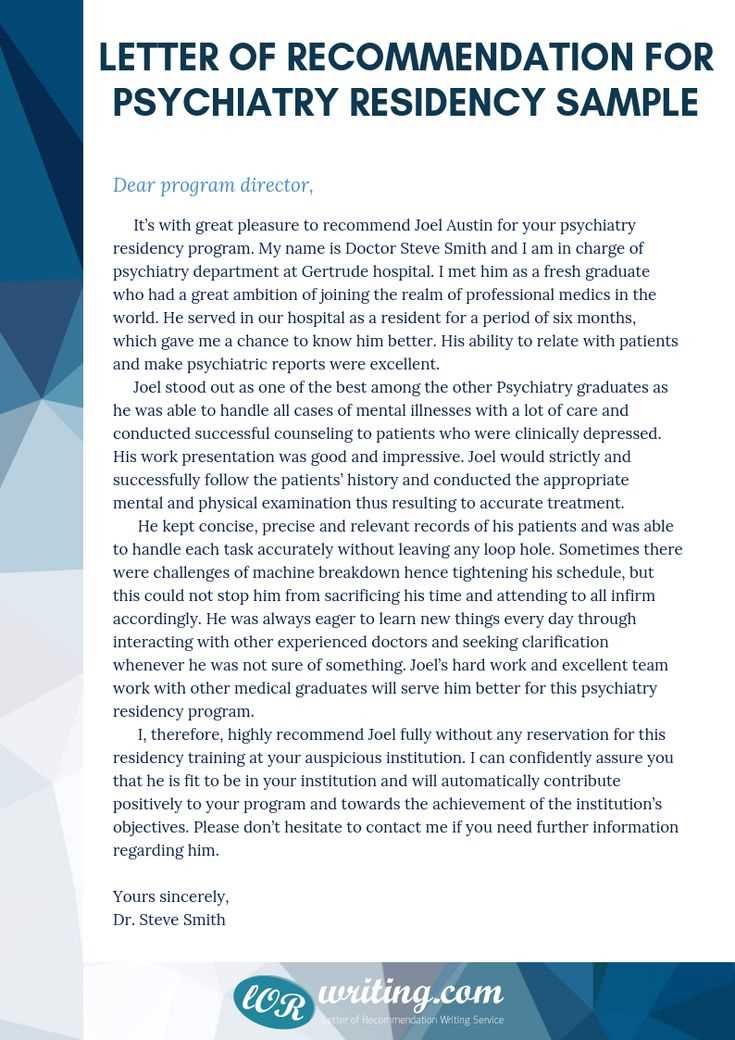
Tailoring the content to reflect the unique attributes of the individual is essential in crafting an impactful message. A personalized approach not only highlights the person’s key strengths but also provides a deeper understanding of their suitability for the opportunity. By focusing on specific achievements, qualities, and skills, the narrative becomes more meaningful and persuasive.
Here are some strategies to personalize the message effectively:
| Strategy | Explanation | Example |
|---|---|---|
| Highlight Distinct Qualities | Emphasize what makes the individual stand out from others. Focus on traits that are essential for success in their future pursuits. | Detail how the person’s exceptional empathy and communication skills allowed them to manage complex situations effectively. |
| Provide Concrete Examples | Use specific instances to demonstrate the individual’s abilities and achievements. This gives the message more credibility and authenticity. | Describe a time when the person successfully completed a challenging project that required both leadership and teamwork. |
| Match the Narrative to the Opportunity | Ensure that the personalized content aligns with the skills and qualities required for the role or position being sought. | Illustrate how the person’s strong organizational skills and attention to detail make them a perfect fit for a task-oriented role. |
Personalizing the message in this way not only makes it more compelling but also demonstrates a clear understanding of the individual’s potential, ensuring that the content resonates with the intended audience and purpose.
Tips for Highlighting Student Strengths
Emphasizing the key abilities and qualities of a student can play a pivotal role in showcasing their potential. By focusing on what makes them stand out, one can paint a vivid picture of their competencies and character. Highlighting their strengths in a strategic and thoughtful manner adds authenticity and relevance to the narrative.
Focus on Achievements and Impact
Instead of simply listing skills, it’s more effective to connect them with real-life accomplishments. Demonstrating how these abilities have positively influenced projects, teams, or communities will leave a lasting impression. For instance, if the student has excelled in leadership roles, provide examples of how they’ve made a difference through their initiative and decision-making.
Incorporate Personal Qualities
Along with professional skills, personal attributes such as resilience, empathy, and adaptability should be showcased. These qualities often define how well a student will handle challenges and interact with others in a professional environment. By weaving these into the narrative, you provide a holistic view of the student’s suitability for future success.